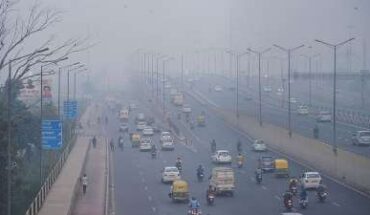New Delhi : Delhi remains shrouded in a dense blanket of smog, with the air quality in various parts of the national capital still categorized as ‘severe.’ The overall Air Quality Index (AQI) currently stands at 346, as reported by the Central Pollution Control Board (CPCB).
Specifically, the air quality in areas like Lodhi Road, Jahangirpuri, RK Puram, and IGI Airport (T3) in Delhi continues to be in the ‘severe’ category, with AQI readings of 438, 491, 486, and 473, respectively. To address this critical situation, the Municipal Corporation of Delhi (MCD) has initiated water-sprinkling measures in the Lodhi Road area in an attempt to mitigate the air quality concerns.
In neighboring Uttar Pradesh’s Noida, areas such as Sector 62, Sector 1, and Sector 116 are also experiencing ‘severe’ AQI levels.
In response to the deteriorating air quality, authorities have taken swift action by imposing a ban on non-essential construction activities and closing primary schools in the capital to protect public health.
Dr. Nikhil Modi of Apollo Hospital highlighted the increasing health issues arising from the rising pollution levels, including more cases of breathing problems, coughs, colds, and eye irritation. He stressed the importance of wearing masks and limiting outdoor activities, especially for individuals of all age groups.
Delhi’s Environment Minister, Gopal Rai, recently announced a five-day ban on construction work in areas with an AQI exceeding 400. Additionally, efforts to curb vehicular pollution have led to the launch of the “Red Light On Gaadi Off” campaign and the introduction of 1,000 private CNG buses to enhance public transportation.
Concerns are growing among scientists as farm fires continue to burn, and unfavorable weather conditions persist, potentially leading to a significant escalation in pollution levels over the next two weeks in the Delhi-NCR region. Medical professionals are particularly worried about the exacerbation of asthma and lung problems in children and the elderly due to the soaring pollution levels.





